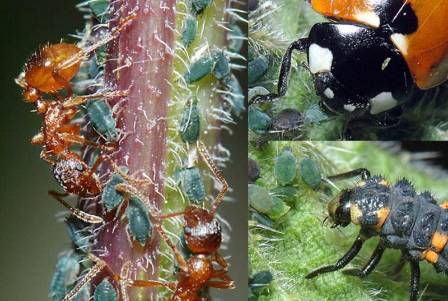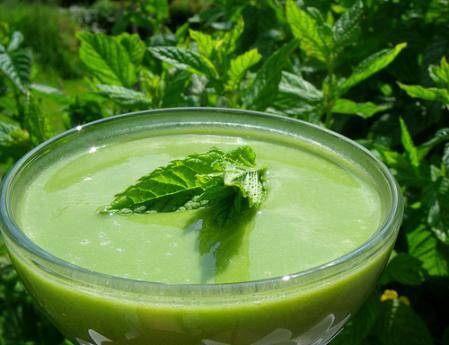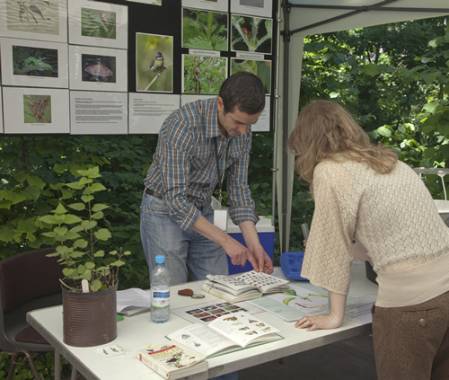National Be Nice to Nettles week took place 14 - 25 May 2014, and the Museum will be running its own be nice to Nettles Weekend on 31 May and 1 June 2014. It's a free event, open to everyone and there will be a range of displays, activities and talks in the Wildlife Garden and inside the Museum. You can read more about the Wildlife Garden activities on Caroline's blog.
Misunderstood stingers
It's easy to label the nettle as an unfriendly plant, after all its stinging property and tough habitus don't help much in giving it the elegance, gentleness and fragility we wish to see in beautiful plants with delicate flowers.
The ability to sting is due to the fine hair-like structures covering every part of the plant. These hollow hairs and their swollen base contain a cocktail of chemicals, such as histamine, formic acid, acetylcholine and others. The hairs are very brittle and break easily, and once broken the sharp fragment that remains will readily enter the skin dishing out the irritant mixture, this causes the familiar and unpleasant rash.
The hairs on the stinging nettle are a great defence against many herbivores and can cause a severe rash if brushed.
The genus Urtica to which the nettle belongs comprises around 80 species distributed in tropical and temperate regions throughout the world. Only 2 species are found in the UK, the perennial stinging or common Nettle (Urtica dioica) and the more local, annual small nettle (Urtica urens).
There are a few differences between them. U. dioca has almost invariably separate plants bearing either male or female flowers, while U. urens has both male and female flowers on the same plant. The latter is also smaller and its leaves are less pointed and more deeply toothed. But they do have a thing in common: the propensity for stinging!
Common nettle on top and small nettle at the bottom. Note how the leaves of the common nettle are more pointed and less deeply toothed compared to the ones of the small nettle.
However, there's more to nettle than its bristliness and if we consider carefully we would discover that the nettle is in fact an unadorned but interesting plant with many useful properties, and which plays a very important role in nature.
Nutrition and knickers
In fact in the UK over 100 species of insects have been recorded feeding on nettle (see the list here). This of course means that the community of organisms depending on - or somehow benefitting from - nettle patches is indeed very large; just think of all the birds, amphibians, predaceous insects, arachnids and others creatures which readily take advantage of this tasty myriad.
Aphids love nettle, particulary new shoots. The picture shows a common nettle aphid (Microlophium carnosum) on nettle.
© influentialpoints.com
Many insects and other organisms benefit from nettle. In this picture on the left Common Red ants (Myrmica rubra) tending a colony of aphids on nettle. On the right adult and larva of 7-spot ladybird (Coccinella septempunctata) feeding on aphids on nettle.
Nettle also provides an excellent fibre which can be easily woven, spun and twisted to make clothes, sacking, fishing nets and even knickers - although I'm not sure about a pair of nettle knickers as it sounds too much like wearing one of those religious cilices for repentance and atonement.
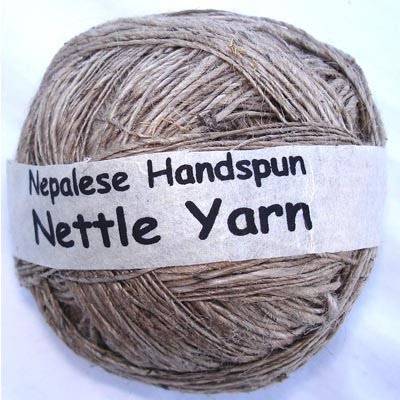 Several species of nettle are used to produce fibre for making textile and clothing.
Several species of nettle are used to produce fibre for making textile and clothing.
The leaves and other parts of the nettle plant are rich in compounds which have remarkable nutritional and medicinal value, and for centuries nettle has been used as a versatile culinary ingredient and as an alternative to conventional medicines.
An earthy nettle soup.
Nettle also has a variety of uses in gardening:
- It can be used to prepare a fertilizer rich in nitrogen and iron.
- It can be chopped and mixed in a compost heap to help speed up the decomposition process.
- Nettle in the garden can be planted to lure aphids (these sucking green insects love nettle) therefore reducing the risk of other garden plants being attacked, moreover the aphid will also attract beneficial insects and birds which readily feed on them.
Nettle-loving
So it is not surprising that nature lovers and conservationists organise public events and fairs to celebrate the nettle's qualities and educate people in the importance of this plant.
And the Museum will be again joining in the celebrations with a weekend dedicated to this formidable plant. Nettle Weekend is taking place on 31 May and 1 June at the Museum. It's a free event, open to everyone and there will be a range of displays, activities and talks in the Wildlife Garden and inside the Museum.
So come and visit us. I'll be there too, in the Wildlife Garden near the pond, with a display about insects and nettle, with emphasis on moths and butterflies of course.
The display about insects and nettle in the Museum's Wildlife Garden.
Here's some information about Lepidoptera and nettle:
According to the Database of Insects and their Food Plants, in the UK there are 56 species of Lepidoptera whose caterpillars have been recorded feeding on nettle. Most of these species are polyphagous, this means that the caterpillars feed on a variety of host plants, which are often - but not always - related.
However, for the following species of butterflies and moths nettle seems to be the favourite food-plant.
Butterflies:
- Comma (Polygonia c-album)
- Peacock (Inachis io)
- Red Admiral (Vanessa atalanta)
- Small Tortoiseshell (Aglais urticae)
Moths:
- Snout (Hypena proboscidalis)
- Paignton Snout (Hypena obesalis) A rare immigrant moth. Only 4 British records
- Spectacle (Abrostola tripartita)
- Dark Spectacle (A. triplasia)
- Burnished Brass (Diachrysia chrysitis)
- Dewick's Plusia (Macdunnoughia confusa) An immigrant moth. Around 50 British records
- Mother of Pearl (Pleuroptya ruralis)
- Nettle Tap (Anthophila fabriciana)
- Small Magpie (Anania hortulata)
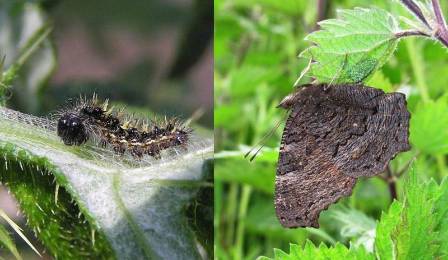 The caterpillar of the painted lady (Vanessa cardui), on the left, feeds mainly on thistles, but occasionally uses common nettle, mallow and other herbaceous plants as food. On the right a female peacock (Inachis io) is laying eggs on nettle, the primary larval foodplant for this species.
The caterpillar of the painted lady (Vanessa cardui), on the left, feeds mainly on thistles, but occasionally uses common nettle, mallow and other herbaceous plants as food. On the right a female peacock (Inachis io) is laying eggs on nettle, the primary larval foodplant for this species.
© Vince Massimo
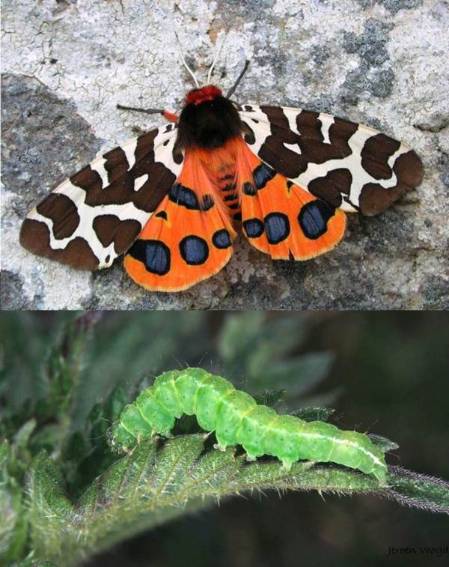 The garden tiger (Arctia caja), on top, is a polyphagous species whose larva feeds on various herbaceous plants, including nettle. While the snout (Hypena proboscidalis) caterpillar feeds preferably on nettle.
The garden tiger (Arctia caja), on top, is a polyphagous species whose larva feeds on various herbaceous plants, including nettle. While the snout (Hypena proboscidalis) caterpillar feeds preferably on nettle.
© Shane Farrel & © Jeroen Voogd respectively
Thanks for reading and I hope to see you at the weekend!



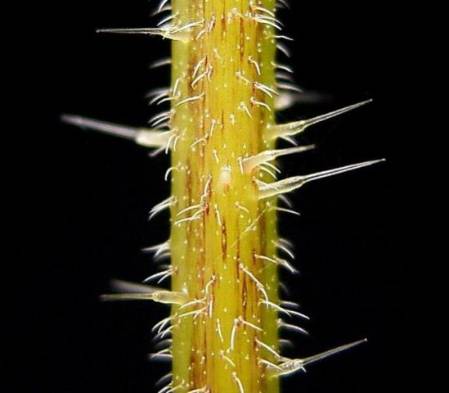
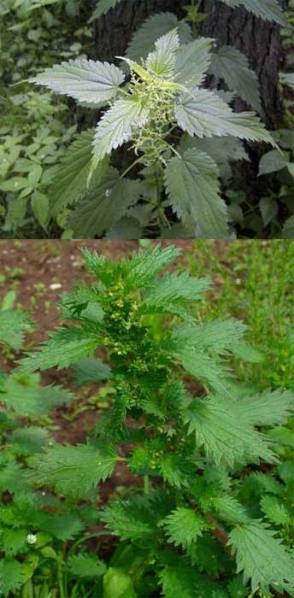
.jpg)
